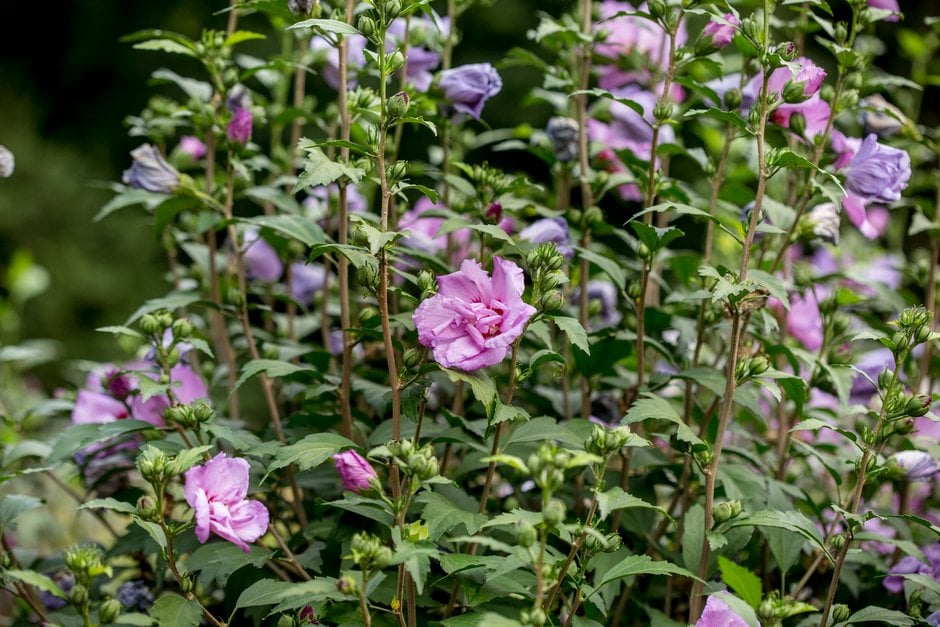Hibiscus syriacus 'Ardens' (d)
rose of Sharon 'Ardens'
A compact, erect shrub up to 2m high, becoming more spreading with age, with deciduous, three-lobed, green leaves, and double, pale pink-purple flowers with maroon centres, fading to a bluer shade towards the edges, from late summer to mid-autumn
Size
Ultimate height
1.5–2.5 metresTime to ultimate height
5–10 yearsUltimate spread
1.5–2.5 metresGrowing conditions
Moisture
Moist but well–drainedpH
NeutralColour & scent
| Stem | Flower | Foliage | Fruit | |
| Spring | Green | |||
|---|---|---|---|---|
| Summer | Red Purple | Green | ||
| Autumn | Red Purple | Green | ||
| Winter |
Position
- Full sun
Aspect
South–facing or West–facing
Exposure
Sheltered Hardiness
H5Botanical details
- Family
- Malvaceae
- Native to GB / Ireland
- No
- Foliage
- Deciduous
- Habit
- Bushy
- Genus
Hibiscus can be deciduous or evergreen shrubs, trees, annuals or perennials, with simple or palmately lobed leaves and large, funnel-shaped flowers over a long flowering season
- Name status
Accepted
How to grow
Cultivation
Grow in neutral, humus-rich, moist but well-drained soil, in a warm position such as a south-facing or west-facing wall in full sun to encourage flowering, and protect roots in winter with an organic mulch
Propagation
Propagate by softwood cuttings in late spring, by semi-ripe cuttings in summer, or by layering in spring or autumn
Suggested planting locations and garden types
- City and courtyard gardens
- Cottage and informal garden
- Low Maintenance
- Flower borders and beds
- Wall side borders
Pruning
Pruning group 1 (little or no pruning of trees and shrubs)
Pests
May be susceptible to aphids, scale insects, mealybugs and glasshouse whitefly when grown under glass
Diseases
May be susceptible to honey fungus (rarely) and powdery mildews
Get involved
The Royal Horticultural Society is the UK’s leading gardening charity. We aim to enrich everyone’s life through plants, and make the UK a greener and more beautiful place.
